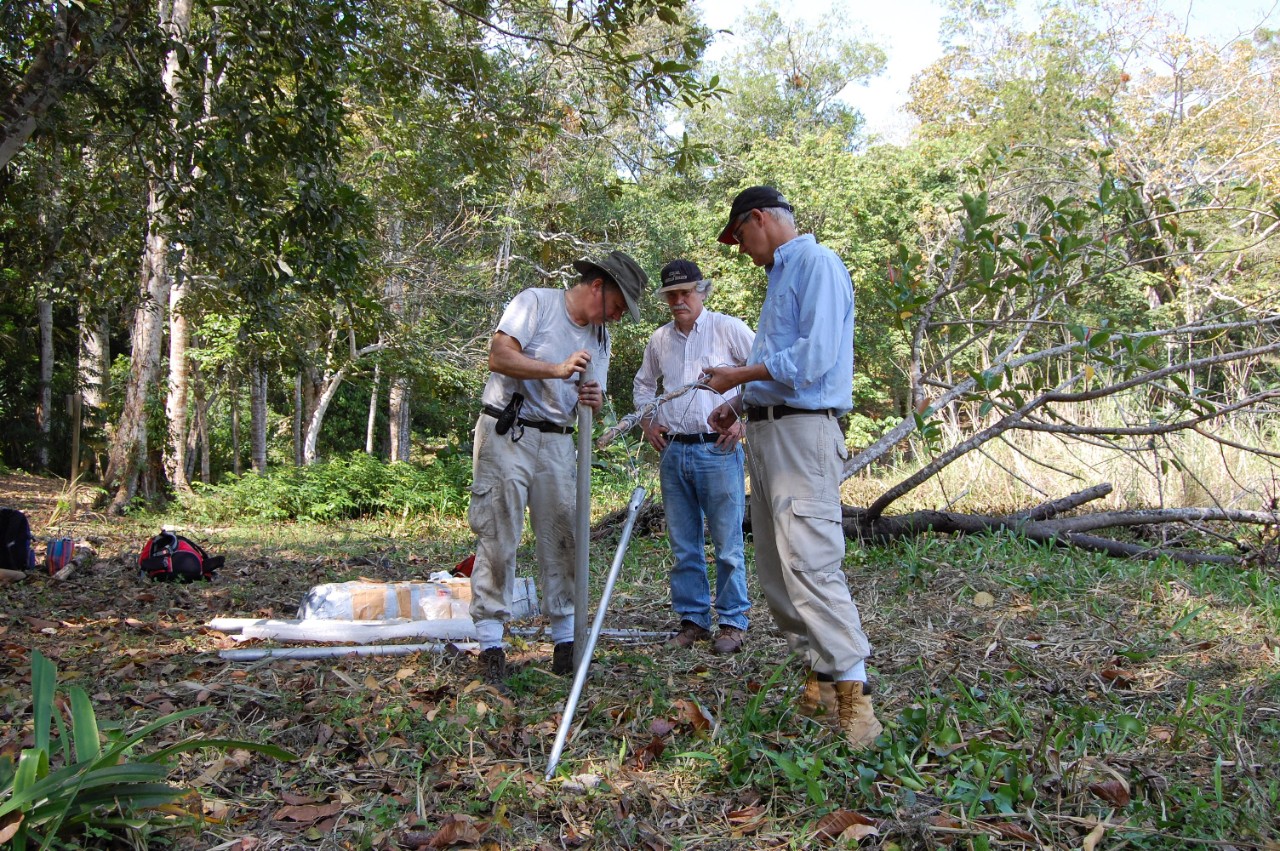
WVXU: UC finds pollution in ancient Maya reservoirs
The director of UC's Center for Field Studies talks about Tikal in Guatemala
WVXU's Cincinnati Edition spoke to University of Cincinnati biologist David Lentz about an exciting UC study that is shedding light on the fate of an ancient Maya city.
A diverse team of UC anthropologists, geographers, botanists, biologists and chemists collaborated on a study published in the Nature journal Scientific Reports that found toxic levels of pollution in ancient reservoirs in Tikal, an ancient Maya city in Guatemala.

David Lentz, executive director of UC's Center for Field Studies, collaborated on a new study of the ancient Maya in Tikal, Guatemala. Photo/Joseph Fuqua II/UC Creative + Brand
Lentz, executive director of UC's Center for Field Studies, told Cincinnati Edition that UC's findings are helping to explain why people eventually left the city, which had thrived for hundreds of years between the third and ninth centuries B.C.
UC sampled sediment at 10 reservoirs within the city and conducted an analysis on ancient DNA found in the sediment. The results showed evidence of toxic cyanobacteria that likely would have sickened anyone who drank the water.
Likewise, UC researchers also found toxic levels of the heavy metal mercury in the water. Lentz said the mercury likely came from cinnabar, a red-colored mineral the ancient Maya mined as a paint and pigment. During heavy storms, the pigment would have been washed into the reservoirs, contaminating the water.
"Even a little bit of mercury can be very dangerous," Lentz said.
UC's Maya research is featured in a new exhibit, Lessons from the Maya, on display now through January at the Cincinnati Museum Center.
Featured image at top: UC researchers Nicholas Dunning, left, Vernon Scarborough and David Lentz set up equipment to take sediment samples during their field research at Tikal. Photo/Liwy Grazioso Sierra

A temple at the ancient Maya city of Tikal rises above the rainforest in Guatemala. Photo/David Lentz
Impact Lives Here
The University of Cincinnati is leading public urban universities into a new era of innovation and impact. Our faculty, staff and students are saving lives, changing outcomes and bending the future in our city's direction. Next Lives Here.
Stay up on all UC's COVID-19 stories, read more #UCtheGood content, or take a UC virtual visit and begin picturing yourself at an institution that inspires incredible stories.
Related Stories
The burning river that fueled a US green movement
May 5, 2025
An article by the BBC takes the reader back to the late 18th and 19th centuries, when US prosperity was defined by the industrial revolution, a time with little regard for the pollutants that came with industrial expansion. UC's David Stradling, professor of history, cited as expert source in the article.
Growing heart failure epidemic calls for prioritizing primary...
May 5, 2025
A rapidly growing heart failure epidemic calls for prioritizing primary prevention, according to a new scientific statement from the American Heart Association published in Circulation in April. The statement reviews the current evidence for predicting heart failure risk and offers risk-based strategies for heart failure prevention.
Two College Credit Plus high school students receive bachelor’s...
May 4, 2025
Two high school students received bachelor's degrees at the University of Cincinnati's Spring Commencement. Caden Elrod, a senior at Walnut Hills High School in Cincinnati, and Sai Gollamudi, a senior at Centerville High School in Centerville, receive their degrees while also completing their diplomas. They are first high school students in UC's College Credit Plus Program to earn bachelor's degrees.
